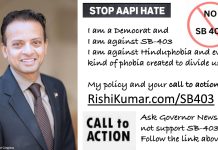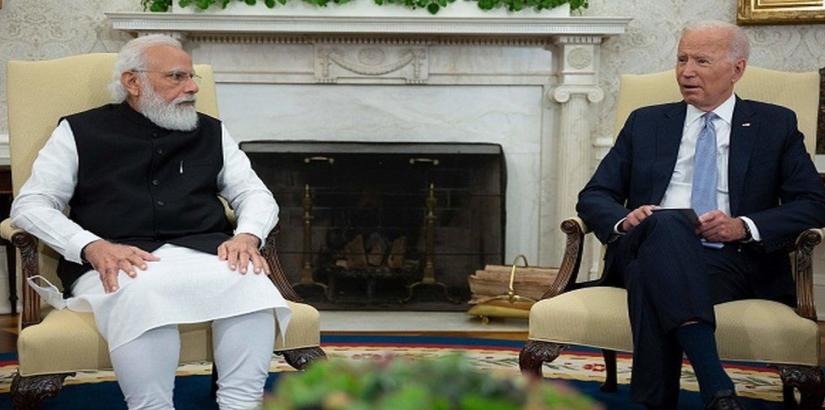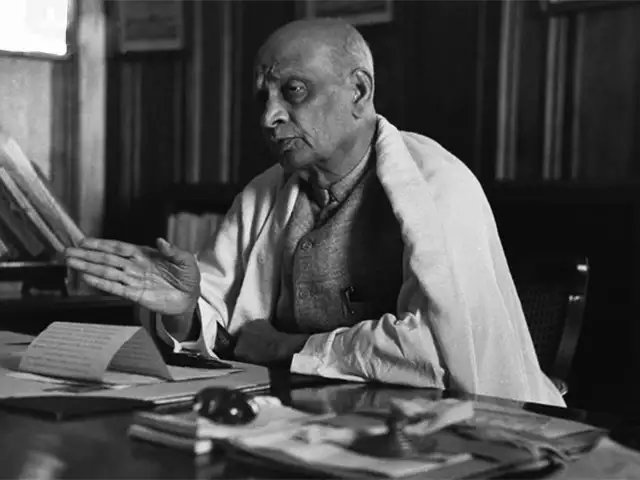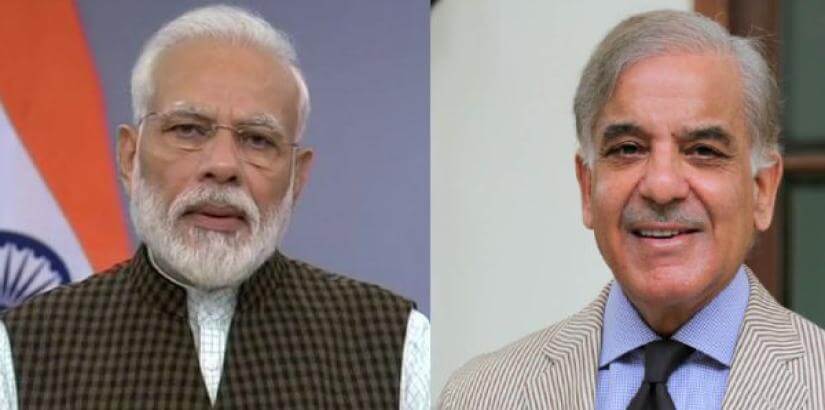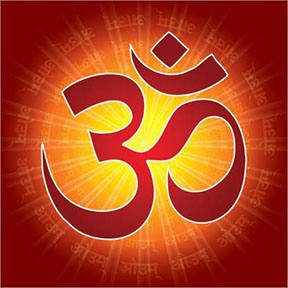 VAMSEE JULURI
VAMSEE JULURI
“If Indians give up Hinduism they will be solving most of all their problems, what with all the piss-drinking and dung-worshipping.”
Try and guess who wrote that. An anonymous troll? A far-right demagogue?
No. These hurtful words were tweeted by Furkan Khan, a reporter who covers India for NPR. That liberal, soothing-voiced, morning-commute, pledge-drive NPR.
Khan has since resigned, but NPR has barely even offered an apology. They don’t seem to recognize how deep the problem runs.
The phrase “cow piss drinker” has become a common slur against Hindus and is used by seemingly respectable professors, journalists, and celebrities in India and the West, even though the same slur was also used by a Kashmiri suicide bomber before killing 40 policemen.
I feel there is something wrong with our education and media today if such culturally (or sometimes existentially) genocidal impulses about other human beings are being normalized. Neither NPR nor any universities seem to have trained their members to refrain from such hateful attacks on Hindus.
I have been studying how American media and pop culture depict Hindus and Hinduism for several years now. My interest in this topic began around the time of the 2008 (“26/11”) terrorist attacks on Indian, American, Israeli, and other citizens in Mumbai by a Pakistan-based extremist group. I was shocked by how unethically most Western news media resorted to blame-the-victim Hinduphobia.
The term “Hinduphobia” is a new one in academic or activist circles, and those who bring it up are sometimes dismissed by ivory-tower gatekeepers as paranoid or apologists for “Hindu chauvinism.” I believe that this denial of reality and dismissal of human pain is wrong.
From the time of the European colonization of India, Hindus and Hinduism have been demonized by Western rulers and media. Winston Churchill, often depicted as a hero, was a vicious Hinduphobe who said Hindus “were a foul race” and even wanted to bomb them – he settled for snatching the farmers’ food during a famine, causing deaths from massive starvation instead. His main source of Hinduphobia was a book by a Nazi-sympathizer, Beverly Nichols, who hated Hindus.
In the US, despite occasional sympathy for Gandhi and the Indian freedom struggle, there was a toxic campaign launched in the 1920s against Hindu, Sikh, and Muslim immigrants. The book “Mother India” by Katherine Mayo, a xenophobic racist pretending to be an objective health journalist, set in place many of the tropes that pervade American media and pop culture to this day. Mayo painted a sordid image of Hinduism as a sexually depraved religion and Hindus as an unhygienic and genetically inferior race who posed a health risk to the rest of the world.
After the civil rights movement and the landmark 1965 immigration act that allowed limited immigration from India, the discourse on Hinduism is only slightly better than what it was in Mayo’s time, often covering up for lack of progress with “model minority” myths.
The best image of the Hindu in American pop culture today is really a condescending one; Apu of “The Simpsons” (who is voiced by a white person), Raj of “The Big Bang Theory,” and other comical, bumbling figures. The other common trope is that of the “thug,” a mostly imaginary bogeyman made up by British colonizers and since repurposed as Indiana Jones villains, Indian religious figures, and anyone else they feel like hating on.
As for the “yoga boom” being a sign of America embracing Hindus, the issue of cultural appropriation and denial are unfortunately still widely in play. I have seen doormats with the “Om” symbol on them being sold in Berkeley studios, and the happy McYogis there seem firmly unaware of how pained we Brown humans who cherish our traditions are about it.
I also believe Hinduphobia is becoming a key issue in American politics because the first American Hindu congresswoman, Rep. Tulsi Gabbard of Hawaii, is being targeted ruthlessly for her religion by her opponents (she faced posters calling her a devil-worshipper, among other slurs). Rep. Gabbard has openly talked about Hinduphobia against her and her supporters on numerous occasions. As she continues to progress in the Democratic presidential debates, it will be important for all of us to learn to decode the propaganda that is being deployed against Hindus in the media today.
In an effort to do just that, in spring 2020, I am offering a senior media studies seminar at the University of San Francisco on the topic of Hinduphobia in the media. We will study movies, TV shows, news coverage, and pop culture artifacts closely, and create the resources needed to fight this long-standing form of bigotry and bias. (I should add that the FBI recently released a new hate crime report which shows attacks against Hindus have indeed been growing.)
Finally, I want to emphasize that the fight against Hinduphobia isn’t something to be done in university classrooms alone. Academicians can offer the scholarly resources, but the will to change entrenched bias in the media must be demonstrated by the community too. I urge temple community leaders and volunteers, artists, writers, teachers, and everyone else from the American Hindu community to speak up and speak out against Hinduphobia.
(The views expressed are personal. An earlier version of this article was first published in The SF Foghorn, the official student newspaper of the University of San Francisco.)



